100 Must-Read Poems That Define English Literature
Introduction
Poetry stands as the most concentrated form of literary expression, distilling human experience into carefully crafted verses that have echoed through centuries. From the epic grandeur of medieval ballads to the experimental innovations of contemporary verse, English literature’s poetic tradition represents an unbroken chain of artistic evolution, cultural reflection, and linguistic mastery.
This comprehensive guide presents 100 essential poems that have shaped English literature, offering readers a curated journey through nearly a millennium of poetic achievement. Whether you’re a student beginning your literary exploration, an educator seeking comprehensive resources, or a passionate reader deepening your understanding, these selections represent the cornerstone works that continue to influence writers and readers today.
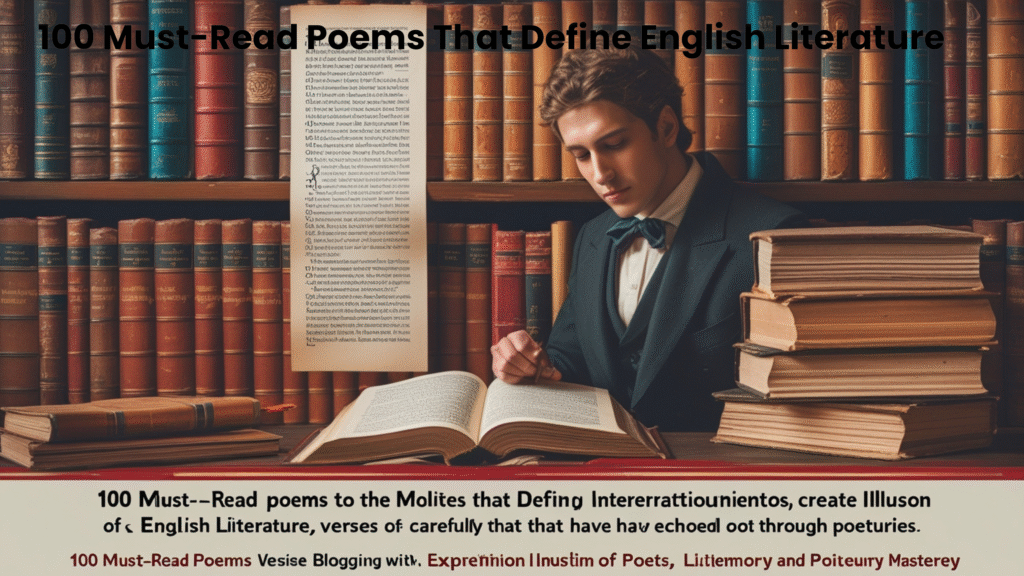
Historical Context and Evolution
Medieval Foundations (1066-1485)
The roots of English poetry stretch back to the Norman Conquest, when Old English traditions merged with Continental influences to create a distinctive literary voice. The anonymous poets of this era laid the groundwork for what would become the English poetic tradition.
Key Medieval Poems:
- “Beowulf” (Anonymous, 8th century) – The foundational epic of English literature, chronicling the hero’s battles against monsters and his ultimate sacrifice. This alliterative verse masterpiece explores themes of heroism, loyalty, and the human condition.
- “The Canterbury Tales: General Prologue” (Geoffrey Chaucer, c. 1387) – Chaucer’s vibrant introduction to his pilgrims revolutionized English poetry with its realistic character portraits and innovative use of the vernacular.
- “Sir Gawain and the Green Knight” (Pearl Poet, 14th century) – A sophisticated Arthurian romance that combines adventure with moral complexity, showcasing the period’s mastery of alliterative verse.
Renaissance Flowering (1485-1660)
The Renaissance brought unprecedented innovation to English poetry, with the sonnet form reaching its zenith and dramatic verse achieving new heights of psychological depth.
Shakespearean Sonnets:
- “Sonnet 18: Shall I compare thee to a summer’s day?” (William Shakespeare, 1609) – Perhaps the most famous love poem in English, demonstrating Shakespeare’s mastery of the sonnet form and his ability to transcend temporal limitations through art.
- “Sonnet 130: My mistress’ eyes are nothing like the sun” (William Shakespeare, 1609) – A revolutionary anti-Petrarchan sonnet that celebrates authentic love over idealized beauty.
- “Sonnet 73: That time of year thou mayst in me behold” (William Shakespeare, 1609) – A poignant meditation on aging and mortality, using seasonal imagery to explore the human condition.
Metaphysical Poetry:
- “The Flea” (John Donne, 1633) – A witty seduction poem that exemplifies metaphysical poetry’s characteristic use of conceits and logical argumentation.
- “Death Be Not Proud” (John Donne, 1633) – A defiant confrontation with mortality that showcases Donne’s theological depth and poetic innovation.
- “To His Coy Mistress” (Andrew Marvell, 1681) – A carpe diem poem that brilliantly argues for seizing the moment, combining philosophical depth with passionate urgency.
Spenserian Achievement:
- “Amoretti: Sonnet 75” (Edmund Spenser, 1595) – Spenser’s exploration of love’s power to confer immortality through poetry.
Restoration and Neoclassicism (1660-1798)
The Restoration period emphasized wit, satire, and formal perfection, producing some of English literature’s most polished verse.
- “Mac Flecknoe” (John Dryden, 1682) – A satirical masterpiece that established the mock-heroic tradition in English poetry.
- “The Rape of the Lock” (Alexander Pope, 1712) – Pope’s brilliant mock-epic that satirizes aristocratic society while demonstrating technical mastery.
- “An Essay on Criticism” (Alexander Pope, 1711) – Essential reading for understanding neoclassical poetic theory and practice.
Romantic Revolution (1798-1837)
Romanticism transformed English poetry, emphasizing emotion, nature, and individual experience over classical restraint.
Lake Poets:
- “I Wandered Lonely as a Cloud” (William Wordsworth, 1807) – The quintessential Romantic poem celebrating nature’s power to inspire and console.
- “Lines Composed a Few Miles Above Tintern Abbey” (William Wordsworth, 1798) – A profound meditation on memory, nature, and spiritual growth.
- “The Rime of the Ancient Mariner” (Samuel Taylor Coleridge, 1798) – A supernatural narrative that explores guilt, redemption, and the natural world.
- “Kubla Khan” (Samuel Taylor Coleridge, 1816) – A visionary fragment that captures the Romantic imagination’s exotic and mysterious qualities.
Second Generation Romantics:
- “She Walks in Beauty” (Lord Byron, 1814) – Byron’s celebration of feminine beauty that perfectly captures the Romantic ideal.
- “Ozymandias” (Percy Bysshe Shelley, 1818) – A powerful meditation on the transience of power and human achievement.
- “Ode to a Nightingale” (John Keats, 1819) – Keats’s exploration of beauty, mortality, and the relationship between art and life.
- “La Belle Dame sans Merci” (John Keats, 1819) – A haunting ballad that exemplifies Romantic medievalism and psychological complexity.
Victorian Complexity (1837-1901)
Victorian poetry reflected the era’s social concerns, scientific developments, and spiritual uncertainties.
- “The Lady of Shalott” (Alfred, Lord Tennyson, 1832) – Tennyson’s mysterious narrative poem that explores art, isolation, and desire.
- “Ulysses” (Alfred, Lord Tennyson, 1833) – A dramatic monologue that captures the Victorian spirit of exploration and progress.
- “My Last Duchess” (Robert Browning, 1842) – A masterful dramatic monologue that reveals character through subtle psychological detail.
- “Porphyria’s Lover” (Robert Browning, 1836) – A disturbing exploration of obsessive love and psychological abnormality.
- “Remember” (Christina Rossetti, 1862) – A poignant sonnet about love and memory that showcases Victorian women’s poetic voices.
- “Dover Beach” (Matthew Arnold, 1867) – Arnold’s pessimistic view of modern life and the loss of faith in Victorian society.
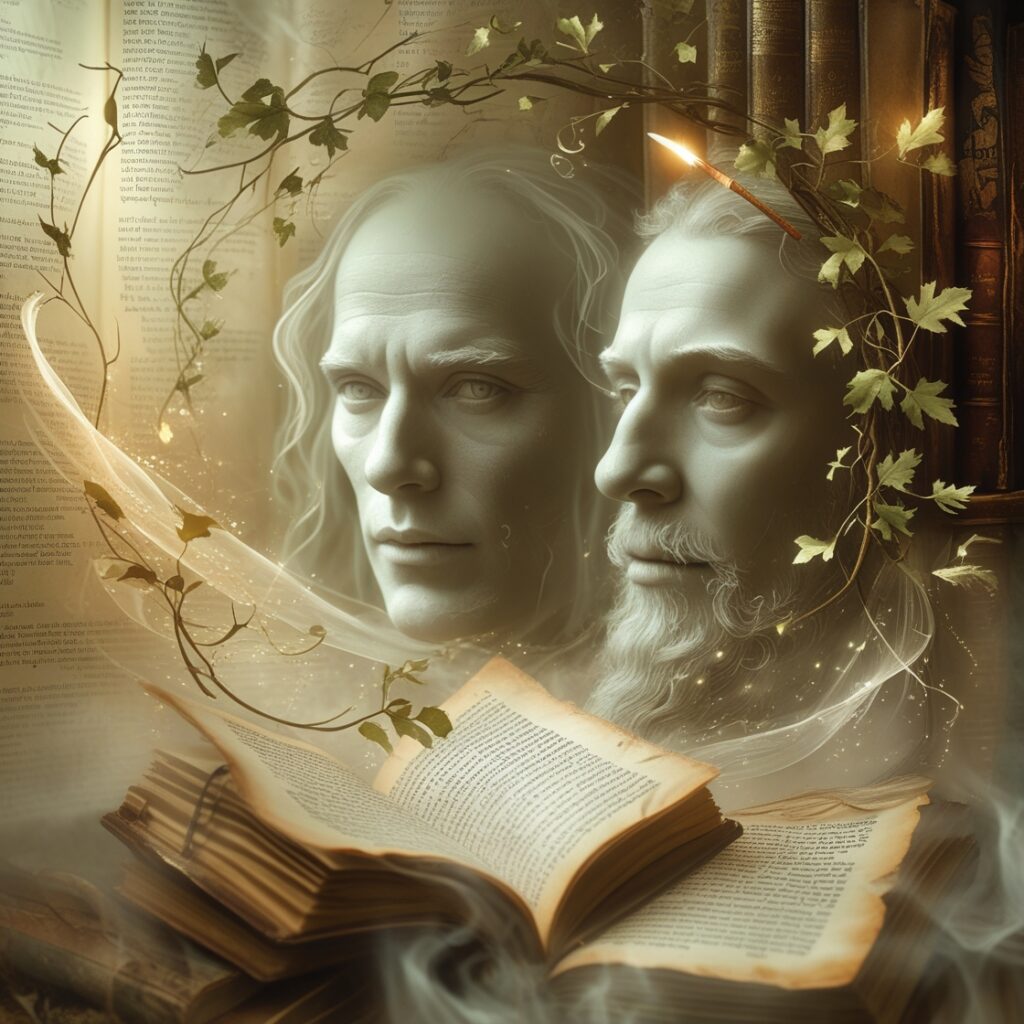
Modern Innovations (1901-1945)
The 20th century brought revolutionary changes to poetic form and content, reflecting the era’s social upheavals and psychological insights.
War Poetry:
- “Dulce et Decorum Est” (Wilfred Owen, 1920) – A brutal anti-war poem that shattered romantic notions of military glory.
- “The Soldier” (Rupert Brooke, 1915) – An idealistic vision of patriotic sacrifice that contrasts sharply with Owen’s realism.
- “In Flanders Fields” (John McCrae, 1915) – The most famous poem of World War I, symbolizing remembrance and sacrifice.
Modernist Pioneers:
- “The Love Song of J. Alfred Prufrock” (T.S. Eliot, 1915) – A revolutionary dramatic monologue that captures modern alienation and anxiety.
- “The Waste Land” (T.S. Eliot, 1922) – The defining modernist poem, fragmenting traditional forms to reflect post-war disillusionment.
- “The Second Coming” (W.B. Yeats, 1919) – Yeats’s apocalyptic vision of historical cycles and modern chaos.
- “Sailing to Byzantium” (W.B. Yeats, 1926) – A complex meditation on aging, art, and spiritual transcendence.
Imagist Movement:
- “In a Station of the Metro” (Ezra Pound, 1913) – A perfect example of Imagist principles, capturing a moment of urban beauty.
- “The Red Wheelbarrow” (William Carlos Williams, 1923) – A minimalist masterpiece that finds profound meaning in everyday objects.
Contemporary Voices (1945-Present)
Post-war poetry has embraced diverse voices and experimental forms while maintaining connections to traditional themes.
- “Do Not Go Gentle into That Good Night” (Dylan Thomas, 1951) – Thomas’s passionate villanelle about confronting death with defiance.
- “Church Going” (Philip Larkin, 1955) – Larkin’s exploration of faith and doubt in post-war Britain.
- “The Whitsun Weddings” (Philip Larkin, 1964) – A masterful observation of social change and human relationships.
- “Ariel” (Sylvia Plath, 1965) – Plath’s intense exploration of identity, mortality, and female experience.
Thematic Explorations
Love and Relationships
English poetry’s treatment of love ranges from courtly romance to modern psychological complexity:
- “How Do I Love Thee?” (Elizabeth Barrett Browning, 1850) – One of the most famous love sonnets in English literature.
- “Meeting at Night” (Robert Browning, 1845) – A sensual poem about romantic anticipation and fulfillment.
- “A Red, Red Rose” (Robert Burns, 1794) – Burns’s passionate declaration of eternal love using Scottish dialect.
- “She Dwelt Among the Untrodden Ways” (William Wordsworth, 1800) – A tender elegy for lost love.
- “Wild Nights – Wild Nights!” (Emily Dickinson, 1891) – Dickinson’s intense exploration of passionate desire.
Nature and the Environment
The relationship between humanity and nature has been central to English poetry:
- “To a Skylark” (Percy Bysshe Shelley, 1820) – Shelley’s transcendent vision of natural beauty and artistic inspiration.
- “The Wild Swans at Coole” (W.B. Yeats, 1917) – Yeats’s melancholic reflection on time’s passage and natural cycles.
- “Stopping by Woods on a Snowy Evening” (Robert Frost, 1923) – Frost’s deceptively simple meditation on duty and desire.
- “The Tyger” (William Blake, 1794) – Blake’s mysterious exploration of creation and divine power.
- “The Lamb” (William Blake, 1789) – Blake’s innocent counterpoint to “The Tyger,” exploring divine gentleness.
Mortality and Time
Death and the passage of time have provided rich material for poetic exploration:
- “Because I Could Not Stop for Death” (Emily Dickinson, 1890) – Dickinson’s personification of death as a courteous suitor.
- “When I Have Fears That I May Cease to Be” (John Keats, 1818) – Keats’s sonnet about artistic ambition and mortality.
- “Thanatopsis” (William Cullen Bryant, 1817) – A philosophical meditation on death and nature’s consolation.
- “Elegy Written in a Country Churchyard” (Thomas Gray, 1751) – Gray’s reflection on mortality and social inequality.
Social Commentary
Poetry has long served as a vehicle for social criticism and reform:
- “The Chimney Sweeper” (William Blake, 1789) – Blake’s indictment of child labor and social injustice.
- “London” (William Blake, 1794) – A powerful critique of urban poverty and oppression.
- “The Song of the Shirt” (Thomas Hood, 1843) – Hood’s protest against industrial exploitation.
- “Still I Rise” (Maya Angelou, 1978) – A powerful anthem of resilience and dignity.
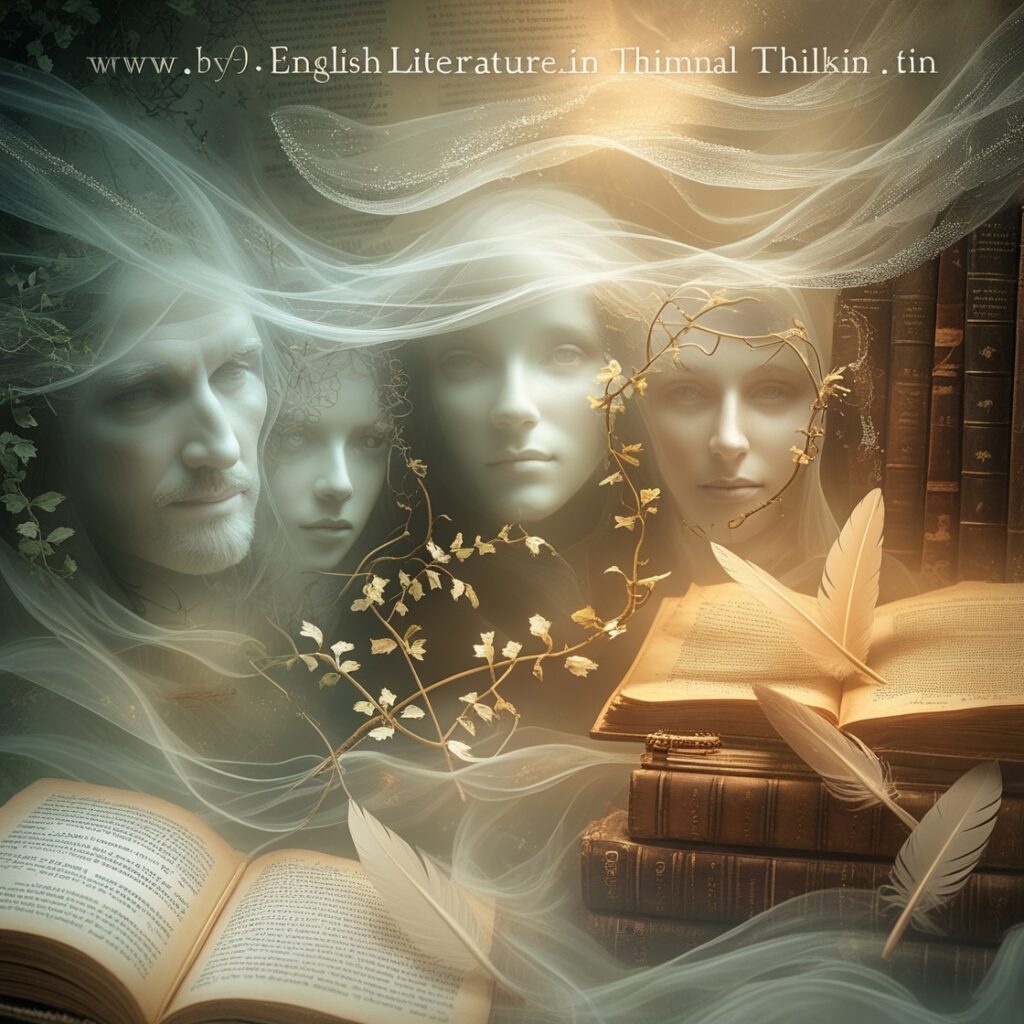
Literary Techniques and Innovations
Poetic Forms
English poetry has developed distinctive forms that continue to influence writers:
Sonnets: 59. “On His Blindness” (John Milton, 1673) – Milton’s Petrarchan sonnet about accepting disability and serving God.
- “The New Colossus” (Emma Lazarus, 1883) – The sonnet inscribed on the Statue of Liberty.
Ballads: 61. “The Ballad of Reading Gaol” (Oscar Wilde, 1898) – Wilde’s haunting account of prison life and capital punishment.
- “La Belle Dame sans Merci” (John Keats, 1819) – A mysterious ballad of love and enchantment.
Blank Verse: 63. “Paradise Lost” (John Milton, 1667) – Excerpts from Milton’s epic poem about the fall of man.
- “Tintern Abbey” (William Wordsworth, 1798) – Wordsworth’s meditative blank verse masterpiece.
Free Verse: 65. “Song of Myself” (Walt Whitman, 1855) – Whitman’s revolutionary celebration of American democracy and individualism.
- “The Hollow Men” (T.S. Eliot, 1925) – Eliot’s fragmented vision of modern spiritual emptiness.
Dramatic Monologue
The dramatic monologue became a distinctive feature of Victorian poetry:
- “The Bishop Orders His Tomb” (Robert Browning, 1845) – Browning’s psychological portrait of Renaissance corruption.
- “Andrea del Sarto” (Robert Browning, 1855) – A complex exploration of artistic compromise and personal failure.
Regional and Cultural Voices
Scottish Poetry
- “To a Mouse” (Robert Burns, 1785) – Burns’s sympathetic address to a field mouse, containing the famous line about “best laid schemes.”
- “Auld Lang Syne” (Robert Burns, 1788) – The traditional song of parting and remembrance.
Irish Poetry
- “Easter, 1916” (W.B. Yeats, 1916) – Yeats’s complex response to the Irish Easter Rising.
- “Digging” (Seamus Heaney, 1966) – Heaney’s exploration of family tradition and poetic vocation.
Welsh Poetry
- “Fern Hill” (Dylan Thomas, 1946) – Thomas’s nostalgic celebration of childhood and natural beauty.
- “And Death Shall Have No Dominion” (Dylan Thomas, 1936) – Thomas’s defiant assertion of human dignity.
American Voices in English Poetry
- “The Road Not Taken” (Robert Frost, 1916) – Frost’s meditation on choice and life’s journey.
- “Fire and Ice” (Robert Frost, 1920) – A concise poem about the world’s potential end.
- “I’m Nobody! Who are you?” (Emily Dickinson, 1891) – Dickinson’s playful exploration of identity and fame.
- “O Captain! My Captain!” (Walt Whitman, 1865) – Whitman’s elegy for Abraham Lincoln.
Women’s Voices in Poetry
Early Pioneers
- “The Author to Her Book” (Anne Bradstreet, 1678) – Bradstreet’s extended metaphor comparing her poems to children.
- “A Letter to Her Husband” (Anne Bradstreet, 1678) – An intimate poem of marital love.
Victorian Women Poets
- “The Cry of the Children” (Elizabeth Barrett Browning, 1843) – Browning’s protest against child labor.
- “Goblin Market” (Christina Rossetti, 1862) – Rossetti’s complex narrative poem about temptation and sisterhood.
Modern Women’s Poetry
- “Lady Lazarus” (Sylvia Plath, 1965) – Plath’s intense exploration of survival and artistic rebirth.
- “Daddy” (Sylvia Plath, 1965) – A controversial poem about father-daughter relationships and historical trauma.
- “Phenomenal Woman” (Maya Angelou, 1978) – Angelou’s celebration of female strength and beauty.
Contemporary Innovations
Experimental Forms
- “The Waste Land” (T.S. Eliot, 1922) – Sections from Eliot’s groundbreaking modernist epic.
- “Howl” (Allen Ginsberg, 1956) – Ginsberg’s beat generation manifesto.
Concrete Poetry
- “40 – Love” (Roger McGough, 1971) – A tennis-themed poem that plays with layout and meaning.
Performance Poetry
- “The Revolution Will Not Be Televised” (Gil Scott-Heron, 1970) – A pioneering work of spoken word poetry.
Philosophical and Spiritual Themes
Religious Poetry
- “The Hound of Heaven” (Francis Thompson, 1893) – Thompson’s dramatic poem about divine pursuit.
- “God’s Grandeur” (Gerard Manley Hopkins, 1877) – Hopkins’s celebration of divine presence in nature.
- “The Windhover” (Gerard Manley Hopkins, 1877) – Hopkins’s complex meditation on Christ and nature.
Existential Questions
- “The Hollow Men” (T.S. Eliot, 1925) – Eliot’s exploration of modern spiritual emptiness.
- “Aubade” (Philip Larkin, 1977) – Larkin’s honest confrontation with mortality and meaninglessness.
Humor and Satire
Light Verse
- “Jabberwocky” (Lewis Carroll, 1871) – Carroll’s nonsense poem that creates meaning through sound and rhythm.
- “The Owl and the Pussy-Cat” (Edward Lear, 1871) – Lear’s beloved nonsense poem.
Social Satire
- “The Unknown Citizen” (W.H. Auden, 1940) – Auden’s satirical portrait of conformity and bureaucracy.
- “Bagpipe Music” (Louis MacNeice, 1937) – MacNeice’s critique of modern urban life.
Global Perspectives
Postcolonial Voices
- “Telephone Conversation” (Wole Soyinka, 1962) – Soyinka’s satirical treatment of racial prejudice.
- “Hurricane Hits England” (Grace Nichols, 1988) – Nichols’s exploration of Caribbean identity in Britain.
Critical Analysis and Literary Significance
These 100 poems represent more than individual artistic achievements; they constitute a continuous dialogue about human experience, linguistic innovation, and cultural identity. Several key patterns emerge from this collection:
Formal Evolution
The movement from strict traditional forms to free verse experimentation reflects broader cultural changes. While medieval poetry emphasized communal values through formulaic structures, modern poetry embraces individual expression through innovative forms.
Thematic Continuity
Despite formal changes, certain themes persist: love, death, nature, social justice, and the search for meaning. Each generation reinterprets these universal concerns through contemporary lenses.
Linguistic Innovation
English poetry has continuously expanded the language’s expressive possibilities. From Chaucer’s vernacular revolution to Hopkins’s sprung rhythm, poets have been linguistic pioneers.
Cultural Reflection
Poetry serves as a mirror to its historical moment while transcending temporal limitations. The war poetry of Owen and Brooke captures World War I’s specific horrors while addressing timeless questions about violence and sacrifice.
Teaching and Learning Applications
For Students
This collection provides a structured approach to understanding English poetry’s development. Students can trace formal innovations, thematic variations, and cultural contexts across centuries.
For Educators
These poems offer rich material for comparative analysis, historical contextualization, and close reading exercises. The diversity of voices and forms supports inclusive curriculum development.
For General Readers
The collection serves as both introduction and deepening resource, allowing readers to explore unfamiliar territories while revisiting beloved classics.
Conclusion
English poetry’s extraordinary richness stems from its ability to combine formal innovation with emotional depth, cultural specificity with universal appeal. These 100 poems represent not just aesthetic achievements but also historical documents, philosophical investigations, and passionate human statements.
The canon continues to evolve as new voices emerge and critical perspectives shift. What remains constant is poetry’s power to distill human experience into memorable language that speaks across generations. From anonymous medieval poets to contemporary innovators, English poetry demonstrates language’s capacity to illuminate, challenge, and console.
Understanding these essential poems provides readers with both historical perspective and contemporary relevance. They remind us that poetry remains a vital force in human culture, capable of changing how we see ourselves and our world. As we face new challenges and opportunities, these poetic voices offer both wisdom and inspiration for the ongoing human conversation about meaning, beauty, and truth.
The study of these 100 poems ultimately reveals that English poetry is not a museum piece but a living tradition that continues to evolve while maintaining its commitment to linguistic excellence and emotional authenticity. Each poem invites us into a unique perspective while contributing to our collective understanding of what it means to be human.
Frequently Asked Questions
1. How were these 100 poems selected, and what criteria determined their inclusion?
The selection process balanced several key factors: historical significance, literary influence, aesthetic quality, and cultural impact. These poems were chosen because they either introduced innovative techniques, captured their historical moment definitively, or achieved enduring artistic excellence. The list includes works that continue to be widely taught, referenced by other writers, and appreciated by general readers. Diversity of voices, forms, and themes was also considered to provide a comprehensive overview of English poetry’s development.
2. Why are some major poets represented by multiple poems while others have only one?
The number of poems per poet reflects their overall contribution to English poetry’s development and the range of their achievement. Shakespeare, for instance, revolutionized the sonnet form and created lasting individual poems, warranting multiple selections. However, some poets created single works of such exceptional quality or influence that one poem adequately represents their contribution. The goal was to showcase the breadth of English poetry rather than create a ranking of poets by quantity.
3. How can readers approach these poems if they’re new to poetry or find some works challenging?
Begin with more accessible poems like Burns’s “A Red, Red Rose” or Wordsworth’s “I Wandered Lonely as a Cloud” before tackling complex works like Eliot’s “The Waste Land.” Read poems aloud to appreciate their musical qualities, and don’t worry about understanding every reference immediately. Use annotated editions for challenging works, and remember that multiple readings often reveal new layers of meaning. Focus first on emotional response and overall impression before delving into detailed analysis. Many of these poems reward both casual reading and scholarly study.
Feminist Criticism and the Novels of Jane Austen: Reassessing Women’s Voices in Literature
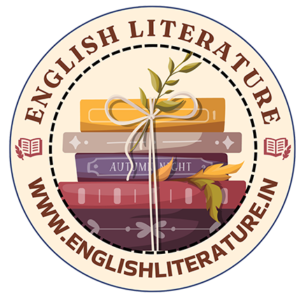
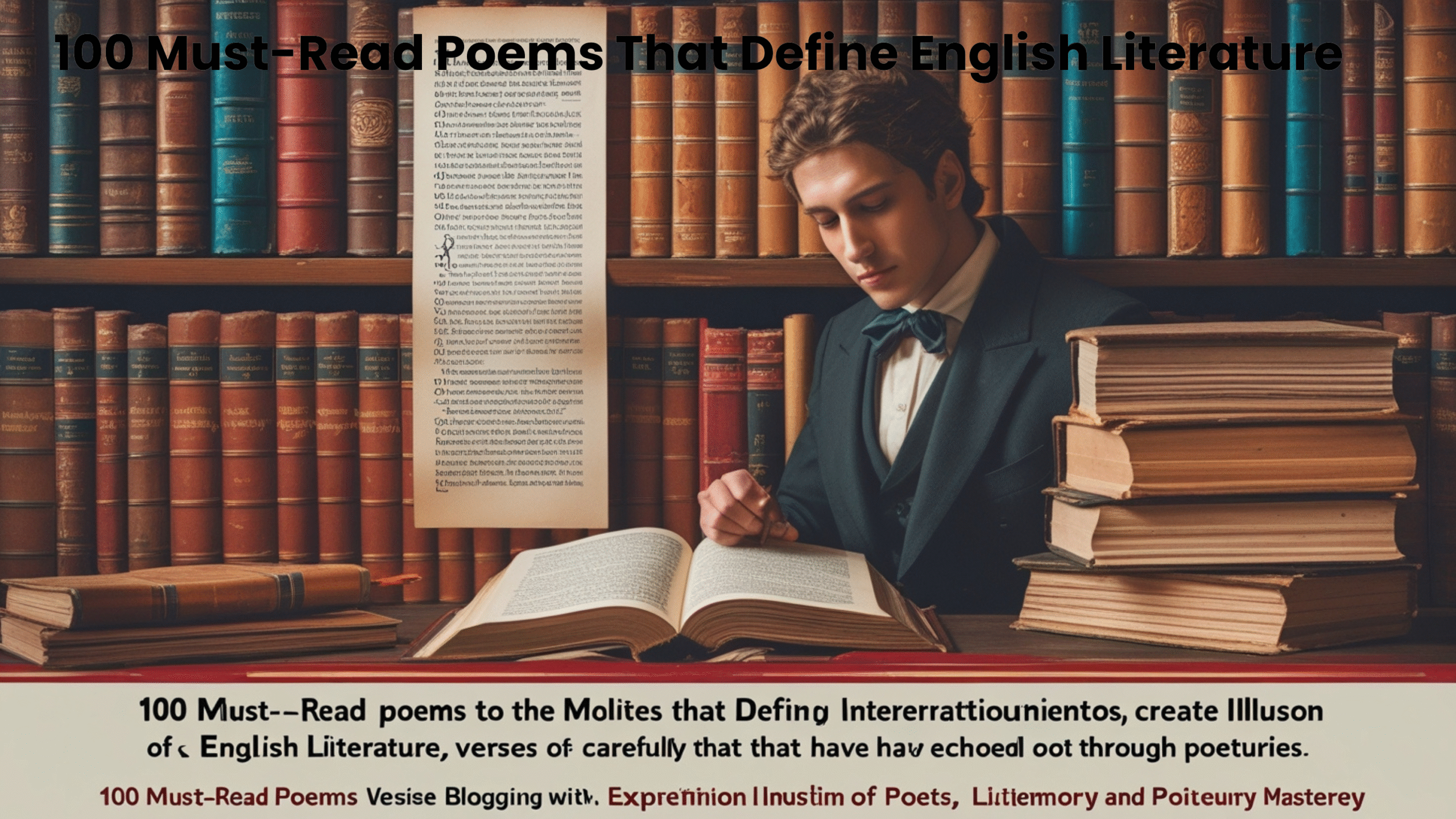
2 thoughts on “100 Must-Read Poems That Define English Literature”